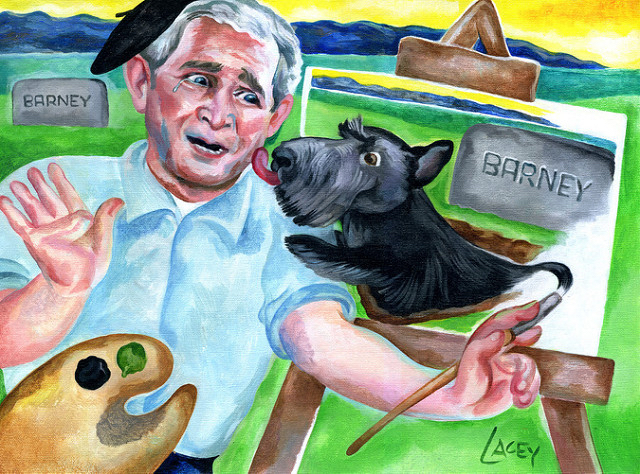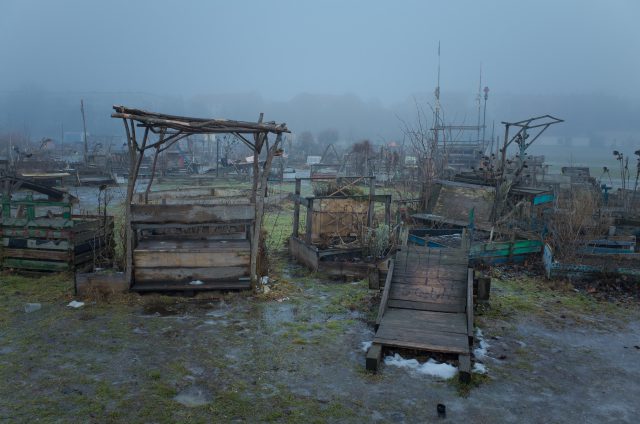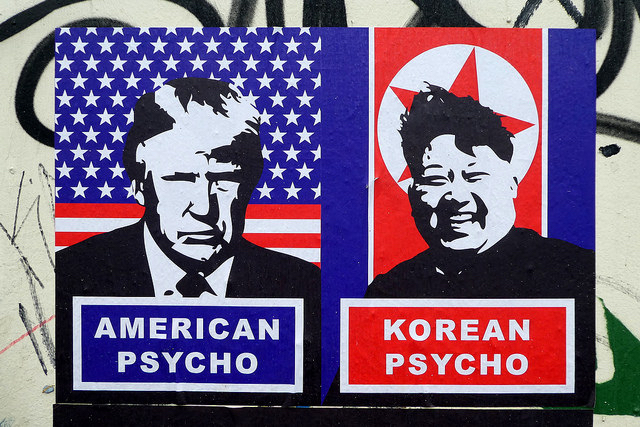When the second season of Netflix’s Stranger Things went live on October 27th, millions of people rushed to finish the whole season. Some just wanted to avoid spoilers. But for others, this mode of consumption was necessitated by their desire to participate fully in conversations about the show. In an era when it’s hard to discern common ground, whether culturally or politically, that sort of experience feels increasingly important.
For my part, the desire to be part of the conversation was reinforced by the fact that my teenage daughter is a huge fan of the show. I knew she would soon be diving deep into the supplemental content surrounding it and wanted to be able to follow along. While the generation gap may not be as pronounced as was in the 1960s, it can still be hard for families to find common interests with staying power. Children might see the same movies or read the same books as their parents, but that doesn’t necessarily mean that they want to talk about them, too. As I’d found out last fall, though, Stranger Things is unusually well suited for that purpose.
Or at least it was for me and, I suspect, other parents who were teenagers in the 1980s. As I discovered from my university students a few years back, the very years of my childhood that I remember least fondly, spanning the end of Jimmy Carter’s presidency and the beginning of Ronald Reagan’s, hold a special appeal for many millennials. For them, the music, movies, fashion and, above all else, computer technology of those years possess an allure that I still have difficulty perceiving. But I suppose that’s because their nostalgia derives from the cultural touchstones of that era rather than the testimony of their elders.
While set in a rather post-apocalyptic future, Ernest Cline’s novel Ready Player One – soon to be released as a big-budget action film – features a lovingly rendered depiction of what life was like for a computer geek back then, one which practically exalts the 1980s into the status of a Golden Age. The more I discussed the book with my students, the more I started to find this alternative history strangely seductive. “I was there, man,” I’d say, ironically invoking the statement that veterans of the 1960s were notorious for making when I was a teenager myself.
Although Stranger Things doesn’t go that far, it does a great job of turning the Reagan years into what the literary critic Frederic Jameson famously termed a “pastiche.” As commentators noted during the show’s first season, some of its references feel a little off to those of us with expert knowledge. Would a small-town Indiana teen of modest means really have been familiar with bands like Joy Division back then? Wouldn’t overachieving middle-school boys of that era been more likely to be into personal computers than ham radio? But even if these details don’t quite fit, the overall impression of “Eighties-ness” – the fashion, the vehicles, the interiors – is strong enough to override even the most OCD person’s objections. The show somehow transmutes even the loneliness and frustration that I felt back then into something exciting. When I’m watching it, I can practically feel the steering wheel of the Pole Position game at the now-disappeared Landover Mall or the sounds our VCR made when I tried to record NBC’s Friday Night Videos for the first time.
Interestingly, when I asked my daughter what appealed to her most about the historical setting of Stranger Things, it wasn’t popular culture she mentioned first. “I like that the kids are able to wander around having adventures without being under adult surveillance,” she explained. “They just seem a lot more free than my own generation.” While she did communicate an understanding of what was dominating the headlines back then – “Reagan. The Cold War. AIDS” – the show’s nostalgia didn’t make her think of them. Instead, it conjured impressions of what everyday life was like before technology had fully redefined our conception of liberty, a time when connectedness was more of a choice than an obligation.
These days, just about everything we do involving computers reinforces the ties that bind us, not only to people we actually know, but to millions we will never meet. You could argue that, at least in a structural sense, the planet’s population has never had more common ground that it does right now. Yet our experience of this technologically mediated reality is more likely to be one of dislocation, loneliness, and suspicion verging on paranoia than feelings of our interconnectedness. We can’t help but be linked to each other, but worry that our interactions are too platform-specific to sustain meaningful solidarity.
This is why cultural commodities that are able to convert their potential crossover appeal into an audience that is both large and diverse, at least from a demographic standpoint, are rare enough that they can exert remarkable social influence. Although this is hardly a new phenomenon – cultural canons are a testament to its persistence – the sheer quantity of content available today, together with steadily broadening polarization in the political arena, powerfully amplify its significance. A film like The Avengers, a book like Harry Potter and the Goblet of Fire, a television show like Game of Thrones, a computer game like Call of Duty, a record album like Taylor Swift’s 1989: all of them matter more now than they would have in pre-internet days, when hits were both more frequent and less likely to dominate the marketplace, proportionally speaking, in the way that these massively successful examples have.
While Stranger Things may not have achieved that level of fame yet, the fact that its highly anticipated second season debuted all at once concentrated its impact. All of a sudden, the show was everywhere again, from interviews with members of its ensemble cast; to merchandise; to an astonishing proliferation of hot takes comparing this year’s episodes with last year’s; and, in those recesses of the internet where hardcore fandom is performed, debating which “ships” should be promoted.
It didn’t take long for more thoroughgoing critique to emerge, either. Predictably, Stranger Things had to face the backlash that almost always comes when something achieves a critical mass of mainstream popularity. The second season was more of the same, but in a way that subtracted from its predecessor’s charms. Too many scenes felt like a repetition of better ones, yet the attempt to introduce new characters at a different location was lame. The absence of a clear political stance, relative to its setting in the 1980s, was both more obvious and more troubling. Plot holes that were easy to forgive the first time around were now both larger and more widespread, not unlike the work of the monstrous entity that the show’s characters contend with.
After watching the new season, I understand where these criticisms come from – they are not groundless – but also have the sense that the individuals making them are trying much too hard to be disappointed by the show. In other words, their need to expose its shortcomings is as much a testament to its cultural significance as the devotion of its biggest fans. The weaknesses these critics, both professional and amateur, discern only matter to them because Stranger Things has become one of those texts that people feel required to have an opinion about.
Most takedowns of the second season have come from people who confess to having a soft spot for the first. Cameron Kunzelman wrote one of the best for Vice. Instead of just communicating fatigue with the show’s treatment of the 1980s, he focuses on the mysterious antagonist the characters must contend with. “The danger,” he notes “isn’t just a singular creature who attacks and eats its victims. This isn’t a slasher show anymore. Instead, it’s about the fear of total domination and the swarming, nightmarish possibilities that await you when your enemies finally get their shit together as a group.”
The problem with this approach is that the “monster” – which in the first season took the memorable shape of a single predator – has been transformed into a menace that is too diverse in its manifestations to keep the narrative centered. “It eats everything it comes into contact with and turns it into a smoothly operating hive mind of 1980s references all moving in harmony with one another despite their differences in framing, action, desires, and content. It is the end of all things, even its own narrative threads and metaphors.”
For Kunzelman, this diffusion of menace deprives the show of what made it memorable. “When I watched the first season of Stranger Things,” he explains, “I thought it offered a pathway. It seemed less cynical about the world, and more invested in understanding how people can bond together in times of struggle. Now, in the wake of the second season, it only seems like it cares about the kind of bonding an epoxy would do. It welds the world into shape, a morass of 1980s references in lockstep with each other, with all of the ironies or inconsistencies between genres ironed out. A vast, smooth space over which nostalgia can frictionlessly glide.”
This is fine writing. Kunzelman does an admirable job of capturing the confusion that anyone who thinks too hard about the show will encounter. Despite its favorable treatment of science — as personified by Mr. Clarke, the sort of teacher we all wish we had had — Stranger Things is not logically coherent. But where he perceives weakness, I see strength. The show isn’t just about the different connections formed by its principal characters, but depends upon them for its narrative infrastructure. They bond. We bond with them. And the show is bound together, however tenuously, by that double bonding.
To be sure, the same could be said of most immersive, ensemble narratives. What sets Stranger Things apart isn’t the mere fact that this happens, but the degree to which it does. There’s a reason the adolescents whose perspective introduced us to the world of Hawkins, Indiana in 1983 and who constitute the focal point of the show’s fandom repeatedly discuss what holds them together as a “party” – a term from the role-playing game Dungeons & Dragons – and worry about whatever threatens that bond.
At times, it almost seems as if the showrunners had set out to update E.M. Forster’s famous modernist dictum for the postmodern era: “Only connect!” Principal characters, whether children or adults, consistently confess to feeling connections that rational thought would seem to repudiate. And it is that willingness to suspend disbelief that helps them keep each other alive. As my daughter puts it, “The best part of the show is that these characters are so willing to believe each other.”
Kunzelman concludes his piece with a clever twist on the trope of the Mind Flayer, a Dungeons & Dragons character who comes to stand in for the monstrous entity during the second season. “Stranger Things needs to acknowledge that times have changed, and the spell is broken, he declares. “No one has to return here, over and over, to feed a nostalgia that only gets emptier. Perhaps, that’s the only way to truly defeat the mind flayer. If you kill the host, the virus has nowhere to go.” It’s pretty clear that he means this as a call to reactivate our disbelief. Rather than letting ourselves be pulled into the show’s vortex of feelings – there is a good deal of funnel cloud imagery in the second season – he wants us to find a place where we can stand our ground, protected from its mind-flaying power.
At bottom, this is a classic Brechtian argument, founded on the conviction that identifying with characters too strongly makes it impossible to get the distance necessary for analyzing how they cope with circumstances beyond their control. As sympathetic as I am to this way of thinking about culture, however, I can’t help but ask whether there can ever be a true alternative. Even when we strenuously resist a text’s invitation to identify, either its character or its creator, we invariably do so together with other skeptics. There’s still a bond that helps sustain us, but one that exists over against the text instead of through our connection to it.
In the case of Stranger Things, we have to acknowledge that the show achieved cultural significance at a time when the suspension of disbelief was being assiduously promoted for political ends. You can hardly spend an hour on social media without being confronted by conspiracy theories targeted at people just like you, at least in terms of the algorithms that classify them, or exposés of ones that appeal to other demographics. To invoke one of the show’s biggest narrative inspirations, The X-Files, the default mode people exhibit on social media is “I want to believe.” But most of them only want to believe whatever reinforces their pre-existing beliefs.
When Kunzelman critiques the new season of Stranger Things for only caring about “the kind of bonding an epoxy would do,” he fails to consider the transgressive potential of facilitating connections that bridge otherwise intractable divisions. The way in which the show’s principal characters come to believe in each other and work in concert, despite having to navigate various conflicts along the way, confronts viewers with the promise of achieving something similar in real life. And the conversations it promotes, as the current moment’s closest approximation of must-see TV, at least delineate a space in which they can start to determine other things they might share, in spite of their differences.
As a progressive who disliked just about everything Ronald Reagan did when he was in the White House and is disgusted by the ways in which his legacy has been perverted over the past three decades – he, at least, knew the value of political compromise – I confess to being wary of the way Stranger Things mobilizes nostalgia for the 1980s. The political and social differences that divided Americans then could not be wished away by a presidential hand wave. And they remain with us today, even if they have metastasized into something far more dangerous.
But I do not think that the show’s nostalgia is an empty as critics like Kunzelman seem to think. While I am hesitant to read too much into the menace that ultimately brings its principal characters together, I don’t think it’s an accident that the gate onto another world that opened up in the first season becomes the point of entry for a rapidly spreading network of impersonal connections in the second. It is only because those characters prioritize their feelings for each other over self-interest that they are able to pool their resources. In the process, they demonstrate a tactile connectedness that ends up proving remarkably resilient in the struggle against both the weaponizing of telecommunications undertaken by government researchers and the monstrous entity their secret project calls forth. Sometimes the best defense of liberty is to strengthen the very bonds that constrain it.
Film stills courtesy of Netflix. All rights reserved.









